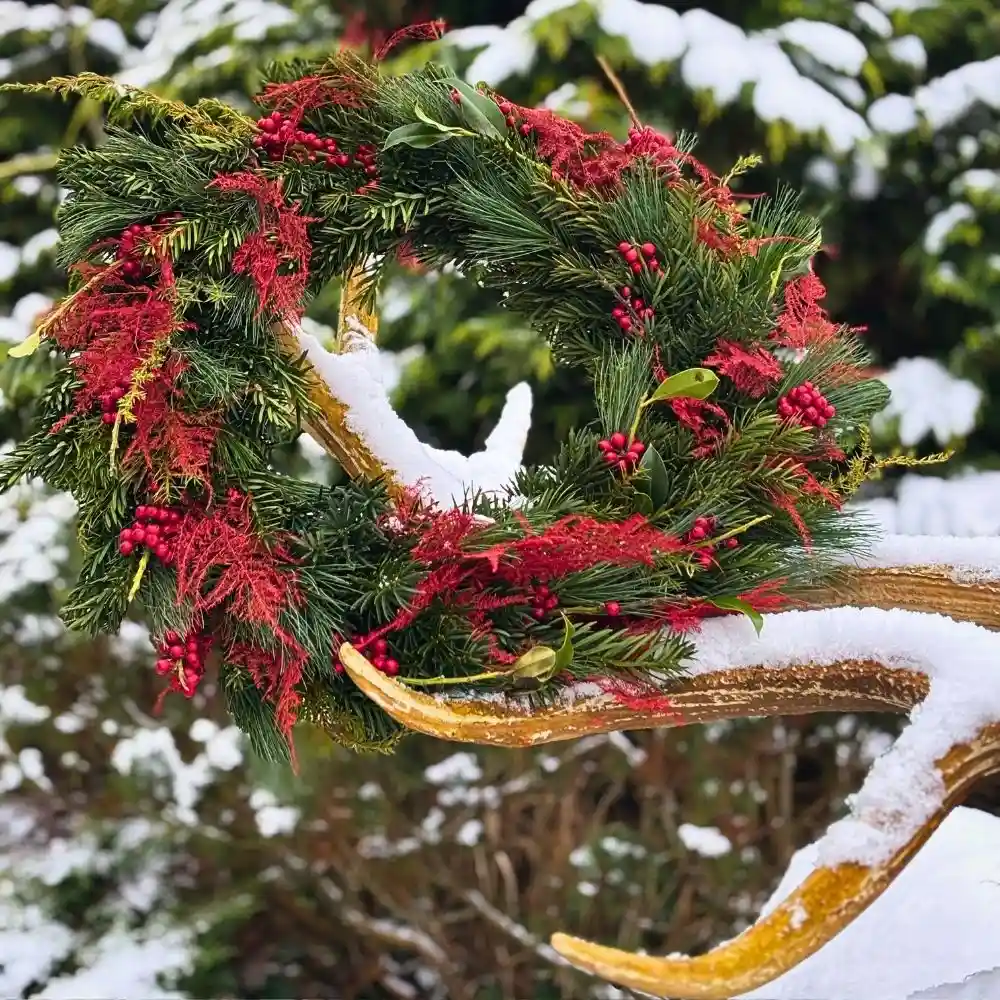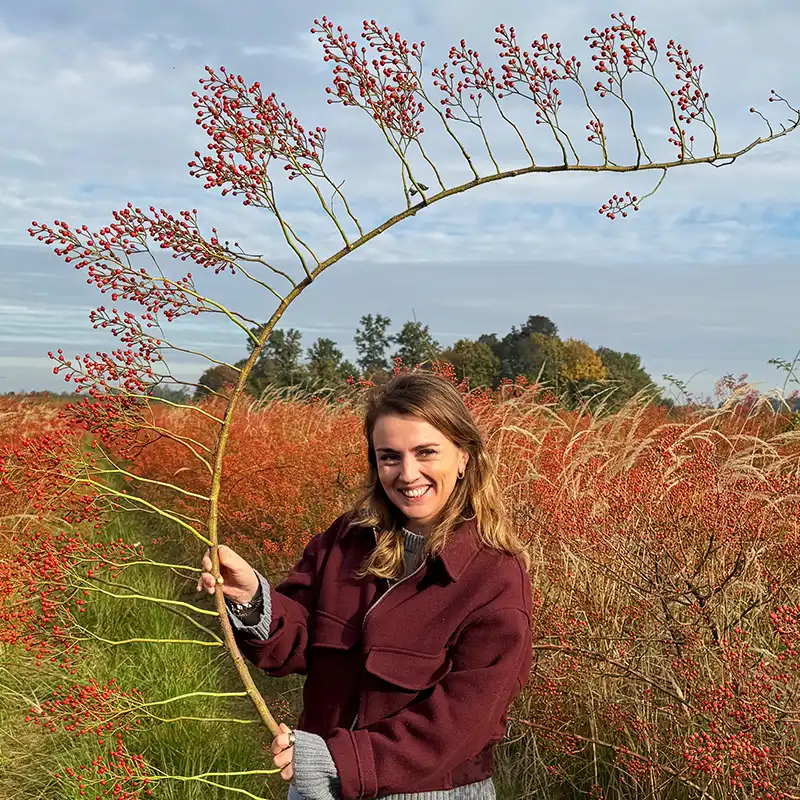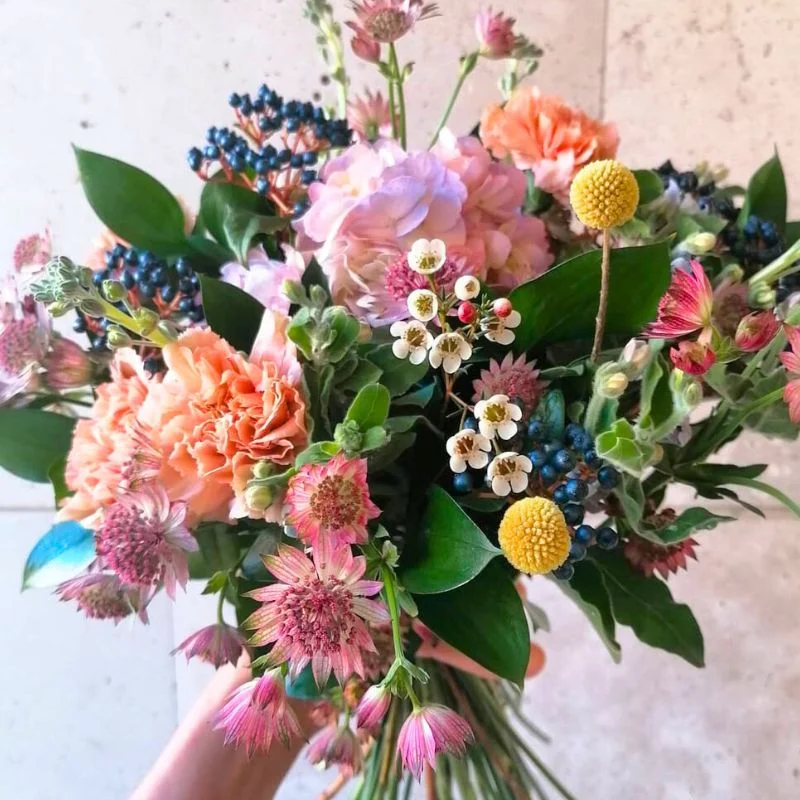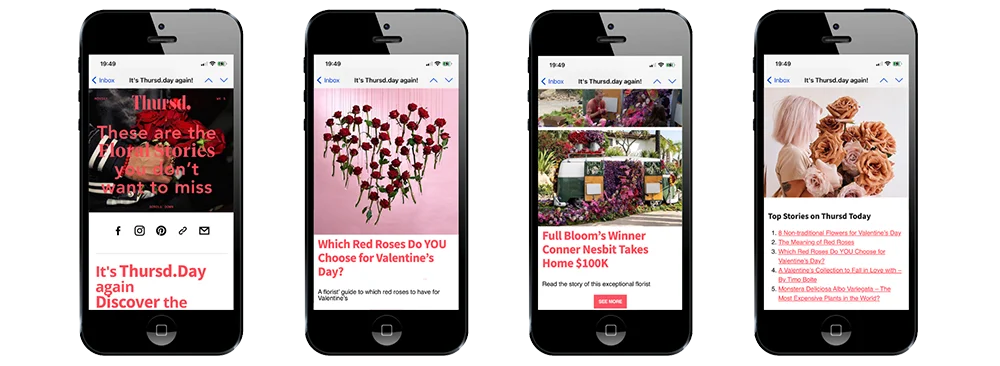Some growers stumble into their passion by accident. That’s exactly how it went for Frans Verhoeven, founder of Verhoeven Bloemen, who’s been growing rosehips in the Dutch countryside near Zaltbommel for over a decade. What started as a small venture—driven more by curiosity than a business plan—grew into a specialized production that’s found its way into the hands of many floral designers, thanks in part to a strong partnership with Adomex.
Rosehips: From Roadside Curiosity to Cultivated Specialty
How did this all start? Many people would think of rosehips as no more than a shrub growing by the roadside rather than an ornamental floral product. For Frans, it all began when he spotted some striking berry-heavy cultivated rosehip branches and got intrigued. “It was actually just a hobby project from someone else,” he recalls. “But I was immediately hooked by the look of it.”

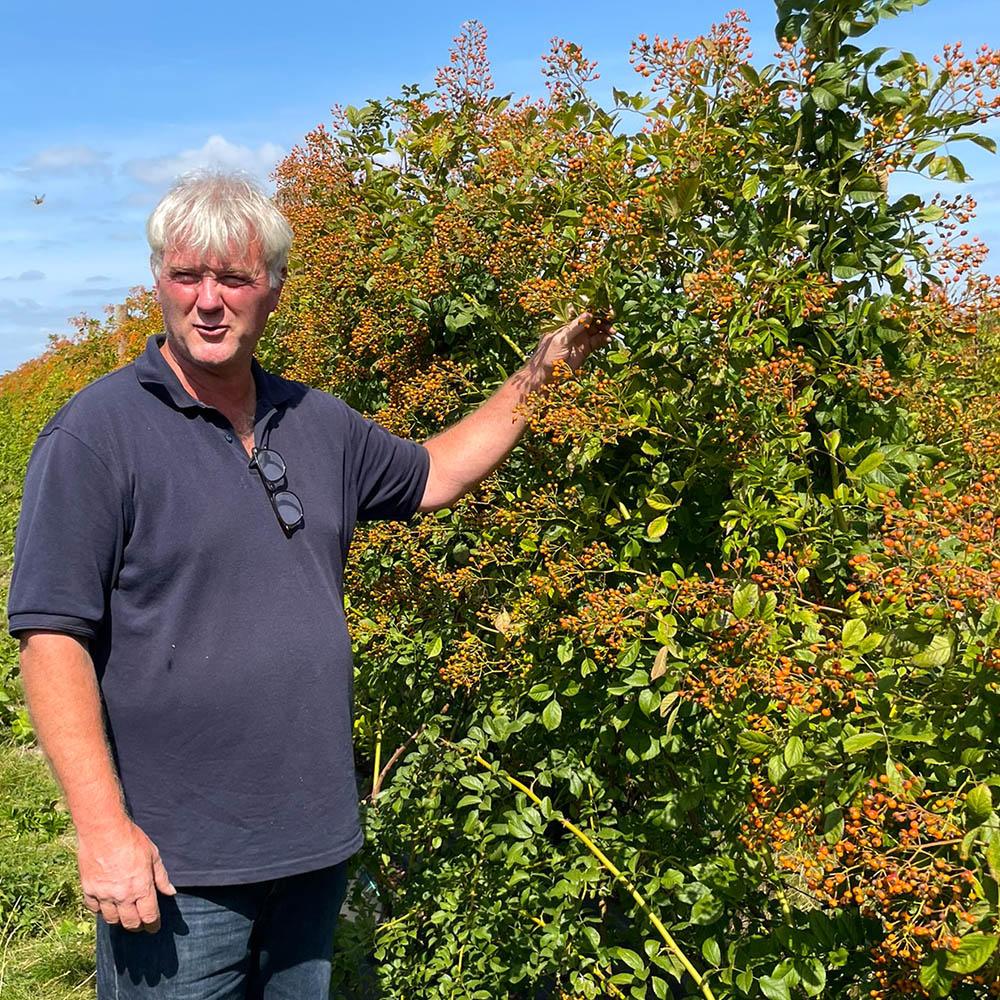
When that grower’s land was sold to a developer, Frans saw an opportunity to take over the rosehip plants. “It was a small patch. I offered €5,000 for it, and that was the start,” he says. He began propagating the plants and experimenting with new types. That led to his own selections, and eventually, collaboration with breeder Kolster to start marketing these home-grown varieties.
The rosehip varieties, sizes, and shapes that Frans grows are intentional and adapted to floristry needs. “You’re always aiming for as much stem length as possible,” he explains. “They’re never super tall, so it’s a balancing act.” His selections are thornless, naturally shaped (no forced growing), and resistant—at least as much as possible—to issues like mildew and pests. “These are multiflora types,” Frans adds, “and they’re part of the rose family. So really, you want to treat them like roses—but with their own unique quirks.”

From August to October: Peak Season for Rosehips
Rosehip season kicks off around late August and runs through October. “That’s when they’re at their best,” Frans says. “And they hold really well, even as they dry. A lot of people don’t know this, but they actually keep their color and structure beautifully.”
This makes them a great fit not just for fresh arrangements, but also dried floral work and home decor. “In recent years, we’ve seen the interior design world picking them up, too. They’ll take entire branches, not just the cut stems, and use them in a more raw, natural way.”
The average stem length of Frans’ rosehips ranges between 30 and 70 centimeters. Plenty of flexibility there, whether you’re designing large-scale installs or tighter, more compact bouquets.
Verhoeven Bloemen operates fully outdoors, so yes—weather plays a role. “We’ve had extreme wet years where the land flooded,” Frans says. “That first year, the Maas and Waal rivers overflowed, and a lot of plants were lost.”
Nowadays, things are more stable. “We use drip irrigation,” he notes, “which keeps water use low and efficient. It’s a sustainable setup.”
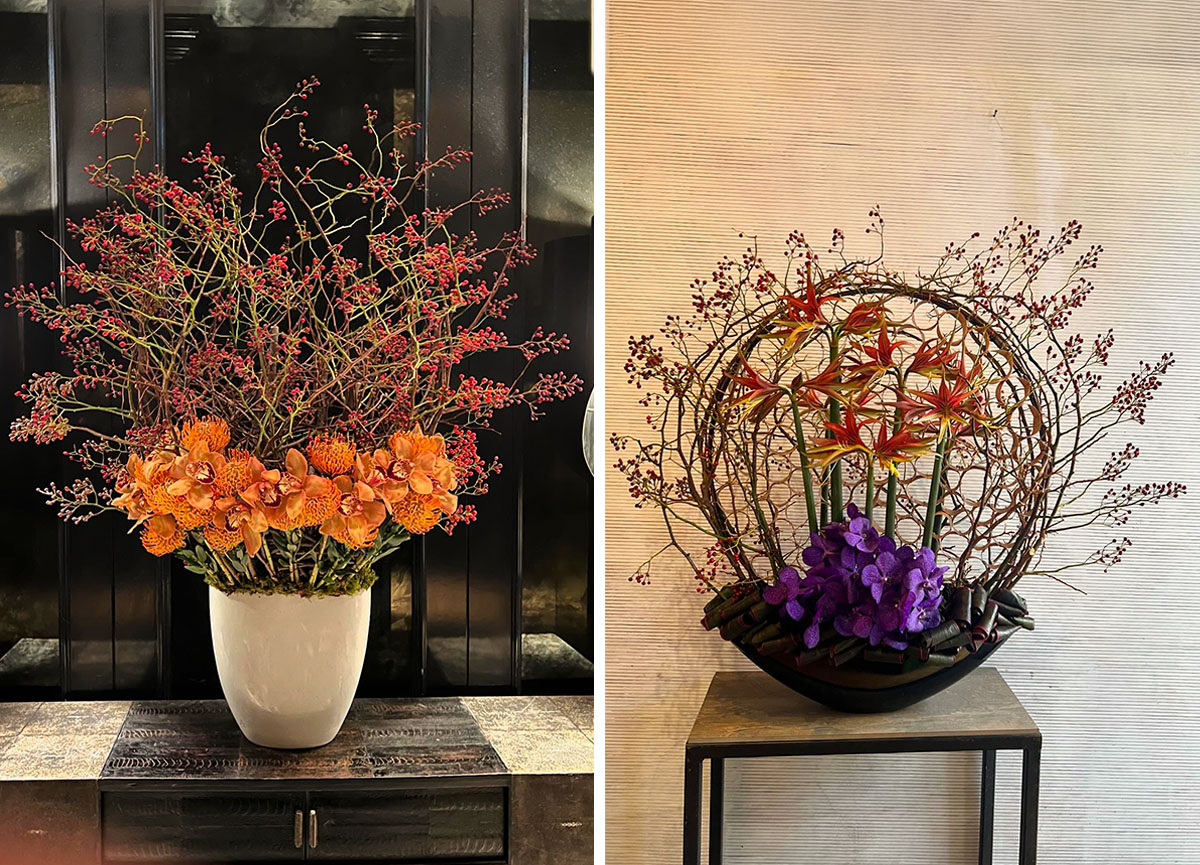
Teaming Up With Adomex
Frans' rosehips found a broader audience after his alliance with Adomex came into play. At first, he wasn’t sure about letting go of the marketing side. “I actually said no in the beginning,” he admits. “But later on, I saw the benefit.”
Adomex now has exclusive rights to market Frans’ rosehips. “They’re a great company to work with,” Frans says. “They handle the promotion and the auction sales, and make sure florists and buyers know what’s available.” His rosehips are sold under the Adomex name at auctions, which helps give them visibility across different customer groups. “It’s a strong partnership,” Frans adds. “They’ve helped get the product into more hands than I ever could on my own.”
At the core of Frans’ assortment are two names that come up often in florists’ circles: Rosehip Prinsberry Red and Prinsberry Orange. “Those are the main ones,” he says. “We’ve bred them ourselves over the years, always selecting and crossing the best performers.”
The berries on these are small and tightly packed—ideal for bouquet work. And while they look quite similar, having both types helps spread out the harvest. “They don’t ripen at exactly the same time, so we can stagger production. Otherwise, it’d all come at once, and we couldn’t keep up.”
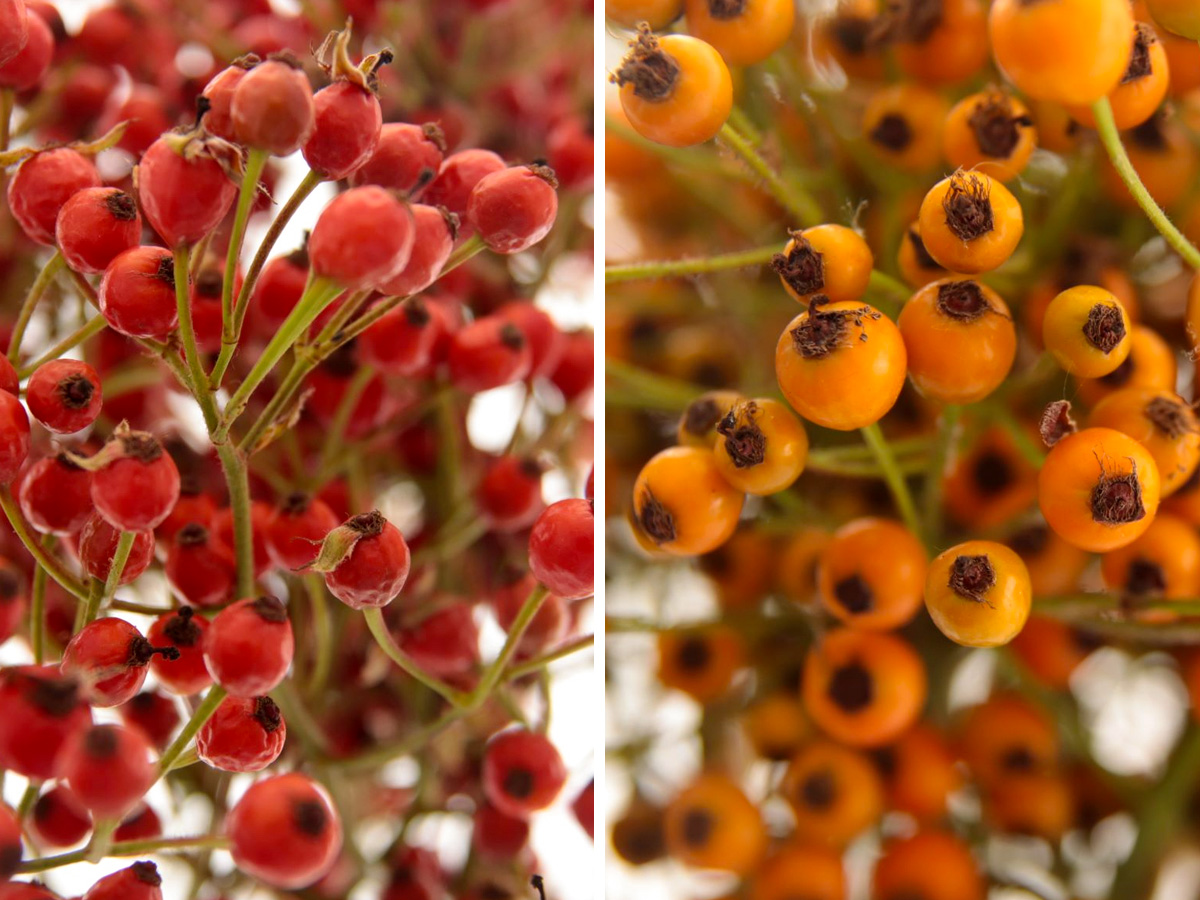
Tips for Florists Working With Rosehips
So, what does Frans recommend to floral designers? “Play around with them,” he says. “They’re versatile and last a long time. Even when they’re dried, they still look great. And if you’re tired of one design, just snip the stems shorter and restyle them.”
They also work beautifully as monobotanicals—just a bunch of rosehip stems in a vase can already set the mood. “Even in a bathroom or bedroom corner, they still bring a nice natural touch.”

Verhoeven Bloemen has turned a humble start into a well-rooted niche. With the right varieties, a hands-on approach, and a strong partnership with Adomex, Frans Verhoeven is showing what’s possible when you grow with intention—and a good eye for color, shape, and seasonality.

For florists, designers, and anyone with a soft spot for berries on stems: now’s the time to get into rosehips.
Header image by @janbell1953.





